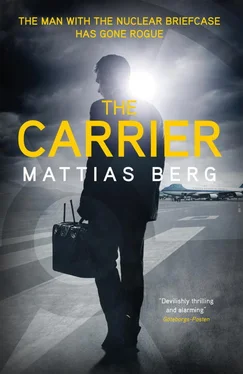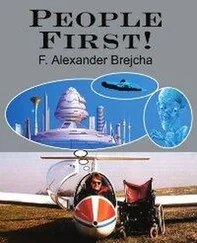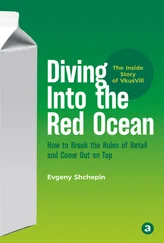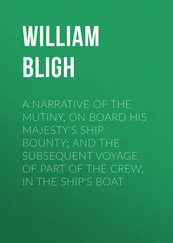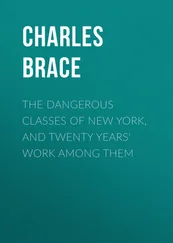Mattias Berg - The Carrier
Здесь есть возможность читать онлайн «Mattias Berg - The Carrier» весь текст электронной книги совершенно бесплатно (целиком полную версию без сокращений). В некоторых случаях можно слушать аудио, скачать через торрент в формате fb2 и присутствует краткое содержание. Город: London, Год выпуска: 2019, ISBN: 2019, Издательство: MacLehose Press, Жанр: Триллер, на английском языке. Описание произведения, (предисловие) а так же отзывы посетителей доступны на портале библиотеки ЛибКат.
- Название:The Carrier
- Автор:
- Издательство:MacLehose Press
- Жанр:
- Год:2019
- Город:London
- ISBN:978-0-85705-788-4
- Рейтинг книги:4 / 5. Голосов: 1
-
Избранное:Добавить в избранное
- Отзывы:
-
Ваша оценка:
- 80
- 1
- 2
- 3
- 4
- 5
The Carrier: краткое содержание, описание и аннотация
Предлагаем к чтению аннотацию, описание, краткое содержание или предисловие (зависит от того, что написал сам автор книги «The Carrier»). Если вы не нашли необходимую информацию о книге — напишите в комментариях, мы постараемся отыскать её.
The Carrier — читать онлайн бесплатно полную книгу (весь текст) целиком
Ниже представлен текст книги, разбитый по страницам. Система сохранения места последней прочитанной страницы, позволяет с удобством читать онлайн бесплатно книгу «The Carrier», без необходимости каждый раз заново искать на чём Вы остановились. Поставьте закладку, и сможете в любой момент перейти на страницу, на которой закончили чтение.
Интервал:
Закладка:
During the committee’s final meeting on October 29–30, 1949, the engineer and businessman Hartley Rowe made his classic remark: “We already built one Frankenstein.” Some years later he developed his reasoning: “I may be an idealist, but I can’t see how any people can go from one engine of destruction to another, each of them a thousand times greater in potential destruction, and still retain any normal perspective in regard to their relationships with other countries and also in relationship with peace.”
The committee’s conclusion in its final report to the decision makers could not be misinterpreted. The message was crystal clear. The atom bomb, fission technology, could not be compared with this thermo-nuclear weapon. The hydrogen bomb was something utterly different. Partly from a technological point of view, partly—and primarily—from a moral one.
In their report, the committee described the critical differences between a hydrogen bomb and an atomic bomb. Emphasized that a thermo-nuclear chain reaction of that sort, based on deuterium, heavy hydrogen, would have limitless potential: “This is because one can continue to add deuterium… to make larger and larger explosions.”
But there were proponents. One of them was Glenn Seaborg, named earlier. During these days at the end of October 1949, when the committee held its conclusive meeting, Seaborg was in Sweden on a lecture tour. He had been invited by Manne Siegbahn, Meitner’s first Swedish scientific contact. According to some of my sources, Meitner and Seaborg met during this visit. What they discussed is nowhere recorded—nor is there an explanation for the fact that Meitner chose exactly this moment to become a Swedish citizen.
In earlier discussions, Seaborg too had been doubtful about whether the hydrogen bomb should be developed. But during the visit to Sweden he wrote a letter to Oppenheimer, which he even recommended him to show to the committee’s other members. In it, Seaborg strongly supported the project’s historic necessity: the need for a speedy, full-scale development process. “Although I deplore the prospects of our country putting tremendous effort into this, I must confess that I have been unable to come to the conclusion that we should not.”
Most researchers in the field emphasize the historical background to Seaborg and others’ conversions. The situation at that point in history, during and after the convulsions of the war. Just as the American security services produced evidence to show that Germany during the war was one step ahead with the development of an atomic bomb, the Soviet Union was now the issue. The dreaded enemy no longer Adolf Hitler, but Josef Stalin.
In this way, humanity once again found itself in what I call “reverse logic”. The one thing that was absolutely unthinkable became the only thing that was absolutely thinkable. Something that required the greatest possible effort, gigantic investments, the depths of mankind’s ingenuity, seemed, in the end, inevitable.
After an intensive debate around the turn of 1949–50, the U.S. political and military leadership decided to disregard the committee’s almost pleading report recommending that the development work be shelved before it had even been begun in earnest. The arguments in favor of this new kind of nuclear weapon, at that time called the “super bomb”, were mostly about being able to destroy the Soviet Union first. “There will be no second time”, was a refrain of the advocates of the hydrogen bomb.
In the decision makers’ written answers to the scientific committee in January 1950, however, the tone was different. Here there was nothing at all about mutual destruction. The rhetoric had been toned down, and even what remained was colored by the gravity of the moment: the irreversibility of the path toward an impending catastrophe of biblical dimensions. The feeling that even the atomic bomb was no longer deterrent enough.
The Joint Chiefs of Staff regarded it as “necessary to have within the arsenal of the United States a weapon of greatest capability, in this case the super bomb. Such a weapon would improve our defense in its broadest sense, as a potential offensive weapon, a possible deterrent to war, a potential retaliatory weapon, as well as a defensive weapon against enemy sources.” The super bomb, they argued, “might be a decisive factor if properly used.” They preferred “that such a possibility be at the will and control of the United States rather than that of the enemy.”
It was an irony of fate that the man who came to lead the development work, eventually called the Father of the Hydrogen Bomb, was Edward Teller. The same man who, following the dropping of the bombs over Hiroshima and Nagasaki, maintained that a new internationalism was the only solution. The catchphrase for the then relatively comprehensive global movement was “One world or none”.
In Bulletin of the Atomic Scientists , a magazine launched after the war to give worried scientists a forum within which to try to limit the growth of nuclear weapons technology, Teller had written: “Nothing that we can plan as a defense for the next generation is likely to be satisfactory: that is, nothing but world union.”
Just a few years after this, in other words, Teller became responsible for the next historic step in the arms race. This weapon, the hydrogen bomb, was developed without even those most closely involved knowing very much about the consequences. In this case, about the nature of the thermo-nuclear reaction itself.
At first it was believed that the reaction could not be limited: the more deuterium, heavy hydrogen, that one added, the more powerful it would become. A violent process with endless power and duration.
Then Teller changed his mind about that too. There was indeed a limit to the purely destructive potential of the thermonuclear process. At about the 100 megaton level—in practice double that of the most powerful nuclear weapon ever devised, the “Tsar Bomb”—the atmosphere would disappear into space. However much one increased the charge beyond that, only the speed with which the earth’s atmosphere would vanish into space would increase. Not the explosive force itself.
This was the type of calculation that set the course for the most advanced scientific project of its time, with by far the greatest budget and an entirely unknown potential. It reminds us of the fact that Nobel Prize winner Enrico Fermi more or less in earnest wanted to make a bet with his research colleagues about whether the atmosphere would catch fire or not, just before the first atom bomb test in New Mexico.
None of those engaged in the development of the thermonuclear weapon had any idea of its secondary effects. How long it would take for our entire civilisation to be obliterated—or if the greater part of our atmosphere would vanish into outer space.
Yet what the scientific committee in its report had called “an evil thing”, had a racing start. Like a self-playing piano at top speed. For most of those involved in the development of the hydrogen bomb, everything must have been broken down into detail: thousands of challenging intellectual and practical problems needing to be solved—until the entirety became a fact. Once again, scientific curiosity took over.
Many of those involved have testified to the almost unbearable silence after the test of the first hydrogen bomb, “Mike”, in November 1952, during the age of slow communications. The telegram from Teller to one of his key collaborators, Marshall Rosenbluth, therefore came as a great relief.
It contained just four words, in the typically low-key jargon of scientists. A confirmation that history’s hitherto worst weapon of mass destruction had now been born without mishap.
“IT WAS A BOY,” the message read. No more, no less.
Читать дальшеИнтервал:
Закладка:
Похожие книги на «The Carrier»
Представляем Вашему вниманию похожие книги на «The Carrier» списком для выбора. Мы отобрали схожую по названию и смыслу литературу в надежде предоставить читателям больше вариантов отыскать новые, интересные, ещё непрочитанные произведения.
Обсуждение, отзывы о книге «The Carrier» и просто собственные мнения читателей. Оставьте ваши комментарии, напишите, что Вы думаете о произведении, его смысле или главных героях. Укажите что конкретно понравилось, а что нет, и почему Вы так считаете.
